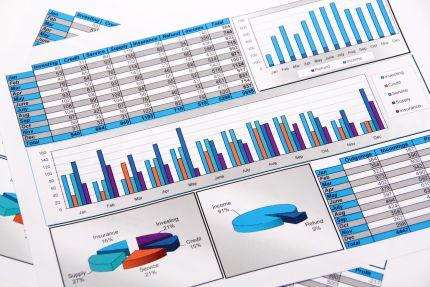Although a complete bundling of all key figures arising in warehouse and distribution systems is possible nowadays, it is difficult due to the multi-layered nature of complex systems. Using a predefined key figure system, it is possible to compare different key figures in a meaningful way in order to generate an ordered set of key figures. The aim of such a system is to provide clear and informative facts about the individual processes and the associated objectives.
A key figure system is used in the management and controlling of logistics systems. The figures calculated therein, mostly from raw data, represent a significant process overview for the employee. A distinction is made between verifiable characteristics (performance) and a comparable evaluation (benchmarking) (see Operationalization of logistics objectives).
Key figure systems are generally understood to be a compilation of quantitative variables, whereby the individual key figures are related to each other in a factually meaningful way, complement or explain each other, and are all oriented towards a common overarching goal.
Thomas Reichmann, 5th edition, page 23, 2011, Viewer+Teubner
Functions of key figure systems
A system of key figures fulfils various functions:
- Information
- Analysis
- Control
- Documentation
Key figure system in distribution centers
How could a consistent system of key figures for the internal Logistics in a distribution center be constructed? Dipl.-Ing. K. Heptner investigated this question and developed the following graphic, which is based on three superordinate key figures. The first two points belong together. Note: Two clicks on the graphic will automatically enlarge the image section.
- Delivery costs: Total costs of the distribution center divided by the number of delivery items per time unit.
- Shipping value factor: Quotient of total costs and retail value of goods per time unit.
- Lead time fulfilment ratio: Quotient of target and actual order lead time.
- Delivery quality: function (illustration) of degree and factor of readiness to deliver as well as incorrect delivery rate and factor (see also Perfect Order Fulfillment)
The VDI guideline 4400 (part 3) follows a similar approach. It requires the following description or objectives of a performance measurement system:
- High logistics efficiency (overall picture)
- High logistics performance (short throughput times, high productivity, excellent delivery service)
- Low logistics costs (low inventory costs, low process costs)
Operationalization of the logistics goals
The key figures themselves serve to operationalize the logistics goals. It is important to note that in addition to the performance indicators for measuring logistics performance and the cost indicators for measuring logistics costs, the system of key figures also includes so-called structural indicators. They are not assigned to any of the objectives in benchmarking studies.
Examples of structure key figures:
– Picking order items per business calendar day
– Goods delivery per business calendar day
– Transport time to customer per shipment
– Transport distance per shipment
– Shipping weight per shipment
Widespread classic key figure systems
- DuPont (ROI tree) – the ratio system was developed as early as 1919 and is suitable for parts of the company for which profit margins can be calculated. The control function focuses on short-term potential.
- ZVEI – this is a largely industry-neutral system consisting of 88 main and 122 auxiliary key figures. In contrast to DuPont, ZVEI focuses on annual accounts; however, long-term surveys are not planned.
- RL – the flexible system developed by Reichmann and Lachnit consists of two core elements, one of which also meets individual information needs and is adaptively structured (special feature).
Also worth mentioning key figure systems: Managerial Control Concept and the Ratios au Tableau de Bord.
In addition, there are special performance measurement systems in intralogistics that are individually tailored to the individual processes.
Purpose orientation of key figure systems
A key figure system has a purpose orientation, which can be developed differently depending on the purpose and function. In the case of action-oriented use, for example, changes in behaviour are achieved on the basis of the information received.
For more information on key figures and controlling in logistics, see also Supply Chain Management (SCM) and Optimization Using Process Chain Management.
Teaser image: Stern / CC BY-SA 3.0
Graphic: TUP / Template: Dipl.-Ing. K. Heptner
Also available in Deutsch (German)
